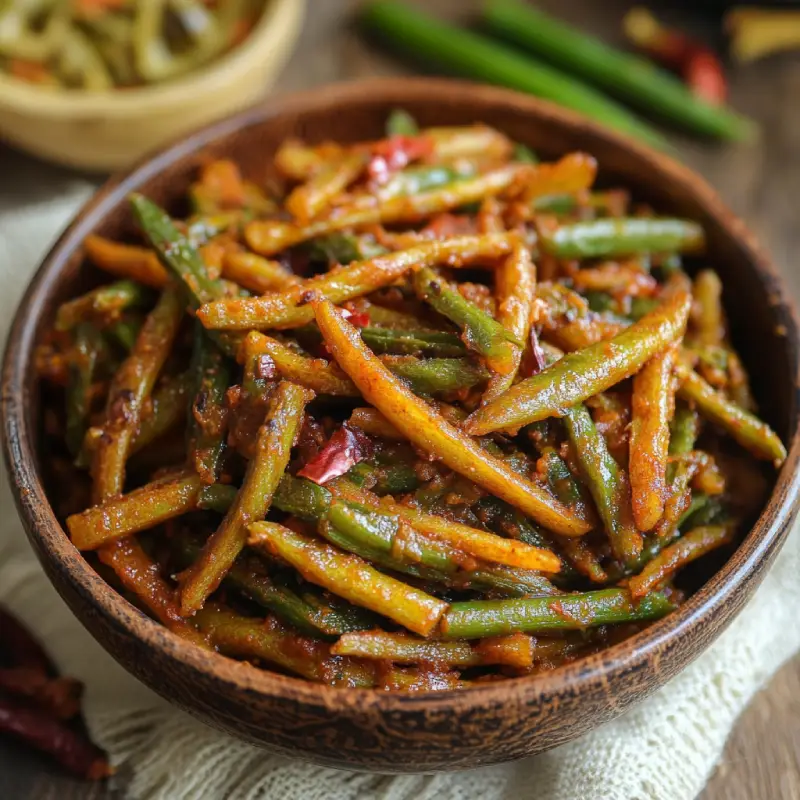Introduction to Lotus Stem in Indian Cooking
Lotus stem (commonly known as kamal kakdi) holds a cherished place in Indian cuisine, especially in northern regions like Kashmir and Himachal Pradesh. Its unique texture—crunchy when stir-fried and tender when boiled—makes it an excellent ingredient for a variety of dishes. Beyond its taste, lotus stem is packed with nutritional benefits, being rich in fiber, vitamins B and C, and essential minerals like potassium and iron. This not only makes it versatile in the kitchen but also a healthy addition to your diet.
Popular Indian Lotus Stem Dishes
Some of the most notable Indian dishes featuring lotus stem include:
- Himachali Bhey: A popular stir-fried lotus stem dish from Himachal Pradesh, often cooked with gram flour (besan) for added texture.
- Nadru Yakhni: A Kashmiri dish where lotus stem is simmered in a flavorful yogurt-based gravy.
Stir-frying is a particularly favored method of cooking lotus stem because it helps retain the crunchy texture that is loved in these dishes. The quick cooking process enhances the flavors without overcooking, preserving the lotus stem’s inherent crispness.
Lotus stem has also found its way into Indian fusion cuisine, featuring in recipes like honey-chili stir fry, where it’s tossed in a sweet and spicy sauce, combining traditional flavors with a modern twist.
Why Lotus Stem Stir Fry is Special
What makes lotus stem stir fry so special is its perfect balance of spices and textures. Stir-frying brings out the natural crunch of the lotus stem, which pairs well with Indian spices like cumin, turmeric, and coriander.
This dish is ideal as a versatile option: it works as a quick snack, a flavorful side dish, or even as a light main course served with rice or flatbreads like roti or naan. The combination of earthy spices and the crunchiness of the lotus stem makes it a favorite in Indian households.
Classic Lotus Stem Stir Fry with Indian Spices
Lotus stem stir fry is a simple and flavorful dish that brings together the crunchy texture of lotus stem and the aromatic Indian spices.
Ingredients:
- 300g lotus stem (kamal kakdi), cleaned and sliced
- 1 tsp cumin seeds
- 1/2 tsp turmeric powder
- 1/2 tsp red chili powder
- 1 tbsp ginger (minced)
- 1 tbsp garlic (minced)
- 1 tsp coriander powder
- 5-6 curry leaves
- Fresh coriander leaves for garnish
Instructions:
- Clean and slice the lotus stems thinly for even cooking.
- Heat oil in a pan and add cumin seeds and curry leaves. Let them crackle.
- Stir in the ginger-garlic paste and sauté for a minute until fragrant.
- Add the sliced lotus stems, turmeric, red chili powder, and coriander powder. Stir-fry on medium heat until the stems turn crispy.
- Garnish with fresh coriander leaves and serve hot.
Pro Tips:
- To maintain the color and texture, blanch the lotus stems in boiling water with a little vinegar before stir frying.
Himachali Bhey Stir Fry
This traditional Himachali lotus stem stir fry combines rich spices with gram flour for added crispness and flavor.
Ingredients:
- 300g lotus stem (boiled)
- 1 tbsp gram flour (besan)
- 1 onion (chopped)
- 1 tbsp garlic (minced)
- 1/2 tsp turmeric
- 1/2 tsp red chili powder
Instructions:
- Boil the lotus stems in water with salt until soft.
- In a pan, sauté onions, garlic, and ginger until golden brown.
- Add the boiled lotus stems and the spices. Cook for 5 minutes.
- Sprinkle gram flour over the mixture and fry until the flour turns crispy and coats the lotus stems evenly.
- Serve hot.
Pro Tips:
- Gram flour adds a distinct flavor and richness to the stir fry, elevating the texture and taste.
Crispy Lotus Stem with Honey Chili Sauce
For a fusion twist, try this sweet and spicy lotus stem stir fry that combines crispy lotus stem with a honey-chili sauce.
Ingredients:
- 300g lotus stem (sliced)
- 2 tbsp cornflour
- 1 tbsp garlic (minced)
- 1 tsp chili flakes
- 1 tbsp honey
- 1 tbsp soy sauce
- 1 tbsp red chili sauce
Instructions:
- Coat the sliced lotus stem in cornflour and deep fry until golden and crispy.
- In a pan, sauté garlic and chili flakes. Add the honey, soy sauce, and chili sauce.
- Toss the crispy lotus stem in the sauce until well-coated.
- Serve immediately.
Pro Tips:
- Ensure the lotus stems are fried until crispy before adding to the sauce to prevent sogginess.
Simple Lotus Stem and Vegetable Stir Fry
This quick stir fry combines lotus stem with colorful vegetables like bell peppers and onions, providing a sweet and savory balance.
Ingredients:
- 300g lotus stem (sliced)
- 1 bell pepper (sliced)
- 1 onion (sliced)
- 1 tbsp ginger (minced)
- 1 tbsp garlic (minced)
- 1 tbsp soy sauce
Instructions:
- Stir-fry the sliced lotus stem with bell peppers and onions in hot oil.
- Add ginger, garlic, and soy sauce to the mixture. Cook for a few minutes until the vegetables are tender but still crunchy.
- Serve hot, garnished with sesame seeds.
Pro Tips:
- Adding bell peppers gives the dish a sweetness that balances the savory soy sauce.
These flavorful lotus stem stir fry recipes highlight the versatility of this healthy ingredient. Whether you’re looking for a traditional Indian dish or a modern fusion recipe, lotus stem adds a delightful crunch and a unique texture to any meal.

